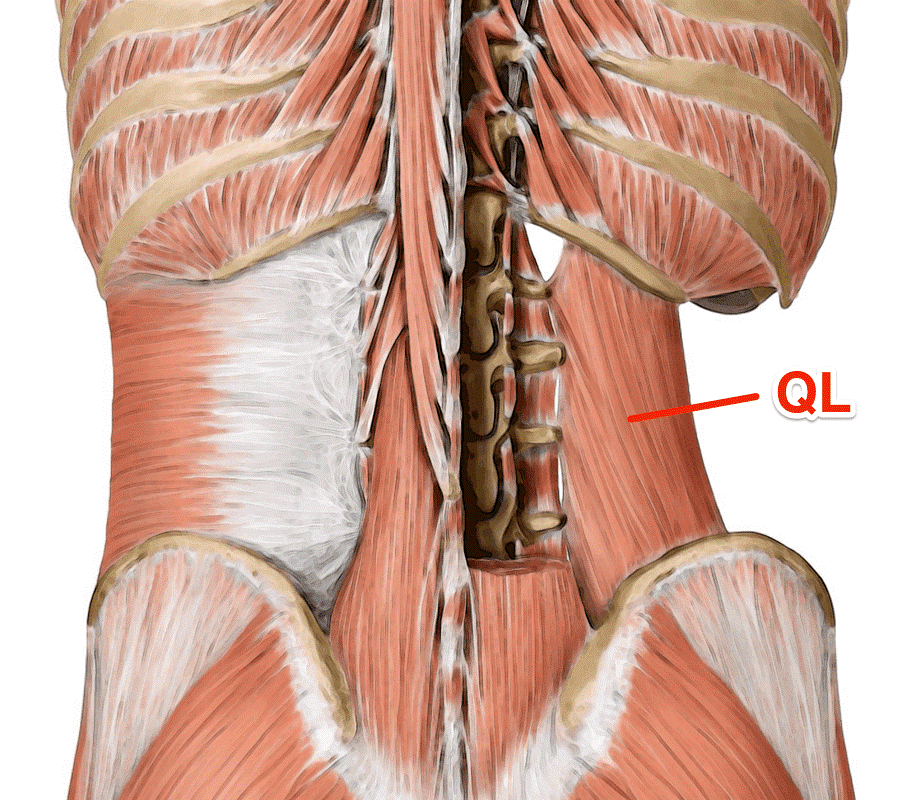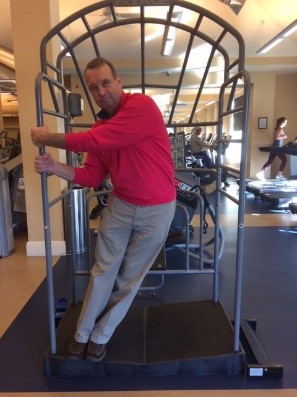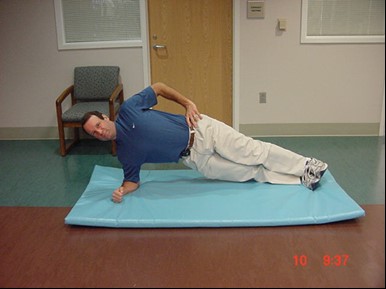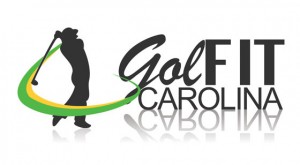Most golfers are predisposed for low back injury, part II
I’ve come to learn and respect a great deal about the quadratus lumborum (QL) over the past few years as it relates to localized lower back pain. The type of lower back pain that generally sits right there just above the hip bone on either side of the spine. It may even, at times, feel like it’s moving from side to side. There’s usually no radiating pain down one or both legs as is the case with sciatica. Referral pain from QL can also be felt in the buttocks, hip and/or groin.

The QL is actually an abdominal muscle that sits deep on each side of the spine and is often referred to as a low back muscle. It contributes to the stabilization of the spine and hip. When both sides contract, the spine extends, bending the trunk backwards. When only one side contracts, the spine will bend toward that side. The QL can also “lift” the hip toward the spine.
Many individuals have a tight QL mainly from how they position their body during the day and at night. Anytime the hip and spine are positioned closer together the QL is shortened and becomes tighter. This occurs often while sleeping on one side and/or stomach with one knee bent in a fetal position. A tight lower back in the morning may be a cue. Other factors such as leaning to one side while driving and/or shifting your body weight over onto one foot while standing can also lead-up to tightness.
A tight QL is a precursor to that debilitating low back muscle pain you experience from simple tasks such as bending down to tie your shoes or reaching across your desk. As mentioned above, it stays localized in the lower back and will immobilize the person for days, making the easiest of everyday tasks difficult.
A good stretch for the QL is one done while standing and grasping onto a solid, immoveable object. A stretch cage (pictured below) is ideal as is a doorframe. Place both feet close to the object with the same side hand palm out and the opposite side hand on top with palm in. You can also step the foot closest to the object in front of the other foot and away from the object. Slowly let the hips lead the way as you form a “C” out of your body. Go as far as comfort allows until a gentle stretch is felt. Hold for a 15-second count and repeat. Do 2 to 3 sets on both sides. Breathe normally.


You’ll know right away whether or not the QL is tight once you start the stretch. Take note if the tightness is just on one side or both. If your back tends to be stiff in the morning, this stretch might offer some relief.
Another great stretch for the QL is the dishrag. Progressions with this stretch, as described in the video, will also incorporate the lats and shoulders.
Two good strengthening exercises for the QL are side planks and farmer’s walk. For the side plank, lie on your left side with either feet stacked on top of each other or one in front of the other. Place your left elbow directly below your left shoulder and then prop yourself up so that the only contact you have with the floor is with your left forearm and left foot (if stacked). Gradually work up to a 45 to 60 second hold and then repeat on the right side. An easier version can be done with knees bent. Prop yourself up so that only your forearm and lower legs are in contact with the floor.
The farmer’s walk is done holding a fairly heavy weight on one side only, in this case, and walking around maintaining an upright posture in your trunk. Holding a weight on the right side only, for example, engages the left side to keep you upright while you walk. Work up to a minute on each side to ensure symmetry. The farmer’s walk also engages the obliques and lateral hips.
If you experience that occasional stabbing-like pain in the lower back usually as a result from some simple task, it could very well be your QL muscle is tight. To reduce and/or eliminate the incidence, take the time to stretch and strengthen. If you do strain it, however, be patient and persistent with muscle injury pain management. I’ve found moist heat to be effective a few days after the injury has occurred.
